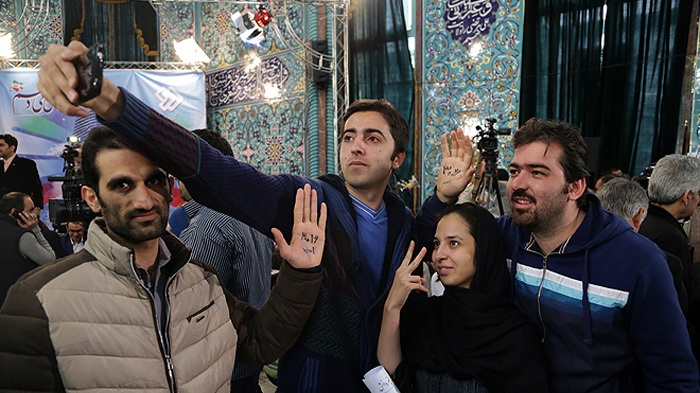Tehran’s Middle Class behind Principlists Electoral Failure?

By: Ali Attaran
The Tenth Parliamentary elections did not bear ideal results for the Principlists, particularly their hardliner extreme. In the absence of their Reformists rivals who were preemptively ousted from the game by the Guardian Council, Principlists had enjoyed absolute dominance over Majles following the elections of 2004, 2008, and 2012.
The most embarrassing defeat for Principlists took place in the capital, Tehran, with all the symbolic political significance that it bears. The Reformists made a sweeping victory in the capital and their entire slate made its way into the parliament in the first round. While the Principlist list included bigwigs, the List of Hope, a mix of Reformists, pro-Rouhani elements and moderate Principlist Ali Larijani's companions, was mainly formed of obscure figures whose record was unknown for all but those who placed them on the list.
While political analyses aiming to explain the results of the elections abound, a number of viewpoints revolved around the sociocultural factors which led to the Principlists' crushing defeat in Tehran.
"More than being political, this was a cultural and civilizational defeat," wrote Vahid Yaminpour, a cultural ideologue of the hardliner Principlist camp. "Tehran is a city with a large community of modern urban class, with quasi-modern lifestyle and quasi-progressive demands. Whether 'class' underpins our analysis or 'lifestyle', it is clear that votes of a part of Tehrani citizens is secular in nature and embedding Western values," Yaminpour added.
His arguments were echoed in another piece published in the hardliner website Raja News: "Tehran's centrality and status as Iran's capital has made it the key focus of Western-style cultural and economic development plans; secularization has been more successful in Tehran compared with other provinces," the author argued. "Beside the wealthy, capitalist class of northern Tehran, the urban middle class with its openly pro-West tendencies has turned into a powerful force in Tehran."
"This is an exact replication of Mirhossein Mousavi's victory over Mahmoud Ahmadinejad in 2009 [presidential elections] in Tehran. Ahmadinejad had 11 million votes more than Mousavi across the country, but could not overcome the wealthy middle class in Tehran," the piece continued, while reminding the audience that with its highest rate of divorce and drug abuse, Tehran has the furthest distance from "the true religious and revolutionary culture".
Hardliner cleric Ja'far Shojouni who is known for his outlandish remarks worded the same arguments in a different way. "Tehran is the main base of opposition to the Revolution and the Supreme Leader. That is why such [Reformist] figures gained votes" he said in an interview. Shojouni later denied his controversial remarks.
This is not the first time Tehran's modern middle class has become the subject of attacks by the hardliners. The 2009 presidential elections came closest to a class struggle between the voters, at least in Tehran. Former Police Chief Esmaeil Ahmadi-Moghaddam referred to this fissure between Tehran's wealthier northern parts and southern-based lower class in 2009: "The span between the Keshavarz Boulevard [in central Tehran] to north of the city is the crisis zone. Unfortunately, a part of Tehran's urban elite live in this area where the ballots were in favor of the contender [Mirhossein Mousavi]. This group has no strong connection with the main body of the society. They think since 91 percent of votes in that district were in favor of Mousavi, the entire country has had a similar pattern." He later reiterated those remarks in a controversial interview with Mehr News: "What they don't know is that not every district is like [the wealthy] Shemiran, and we have … Shah Abdolazim, Kahrizak and Gharchak [south of Tehran]."
Concerns about Tehran urbanites and their political behavior accelerated plans during Ahmadinejad's presidency to change the capital. His deputy for Development Management and Human Resources Lotfollah Forouzandeh explicitly addressed that goal during a speech in October 2010: "talks about moving the capital are serious and the president follows the topic on Sunday [working sessions]. Nowhere in the world are all economic, political, social and cultural institutions centralized in one place. During the recent sedition [post-election protests] there were no protests in provinces. Two million people in Tehran had voted for Mousavi, which is an insignificant number compared to 40 million [total voters]. But the country had to struggle [with the protests] for eight months."

